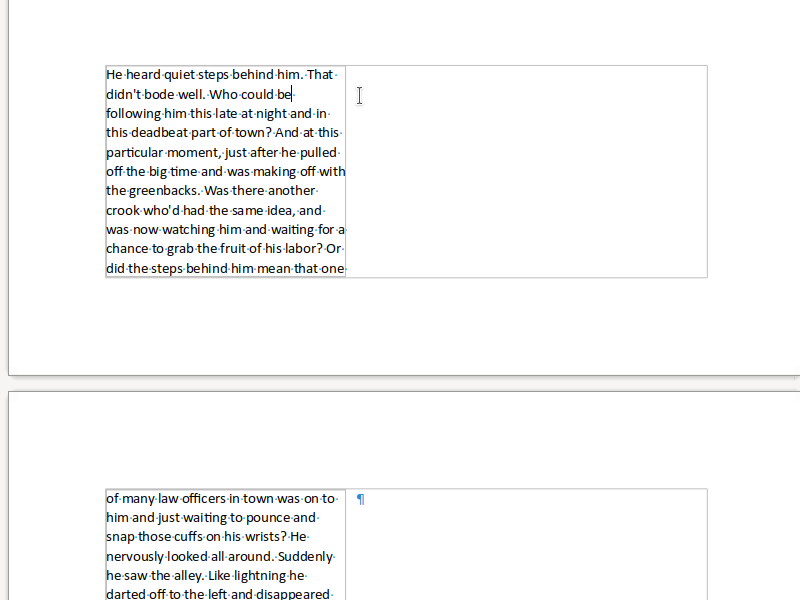Estimated read time: 3 minutes
This post is part of a series to describe how Writer now gets a feature to handle tables that are both floating and span over multiple pages.
This work is primarily for Collabora Online, but is useful on the desktop as well. See the 10th post for the previous part.
Motivation¶
Previous posts described the hardest part of multi-page floating tables: making sure that text can wrap around them and they can split across pages. In this part, we'll look at a case where that content is not just text, but the wrapping content itself is also a table.
Results so far¶
Regarding testing of the floating table feature in general, the core.git repository has 92 files now
which are focusing on correct handling of floating tables (filenames matching
floattable-|floating-table-). This doesn't count cases where the document model is built using C++
code in the memory and then we assert the result of some operation.
Here are some screenshots from the improvements this month:

The first screenshot shows a situation where the mouse cursor is near the right edge of the first page of a floating table. What used to happen is we found this position close to the invisible anchor of the floating table on that page, then corrected this position to be at the real anchor on the last page. In short, the user clicked on one page and we jumped to the last page. This is now fixed, we notice that part of the floating table is close to the click position and we correct the cursor to be at the closest position inside the table's content.

The next screenshot shows a floating table where the content wrapping around the table happens to be an inline table. You can see how such wrapping didn't happen in the past, and the new rendering is close to the reference now.
How is this implemented?¶
If you would like to know a bit more about how this works, continue reading... :-)
As usual, the high-level problem was addressed by a series of small changes:
- sw floattable: fix finding the nearest text in split flys on mouse click
- tdf#60558 sw floattable: allow wrap of table on the right of a floattable
- sw floattable: fix split of anchor text in 2nd half of the paragraph
- sw floattable: fix split of anchor text at para start
- sw floattable: fix outdated text frame portions after split
- sw floattable: disable UI to enable this when anchored inside TextBox
- tdf#158686 sw floattable: fix print preview crash
Want to start using this?¶
You can get a snapshot / demo of Collabora Office 23.05 and try it out yourself right now: try the unstable snapshot. Collabora intends to continue supporting and contributing to LibreOffice, the code is merged so we expect all of this work will be available in TDF's next release too (24.8).